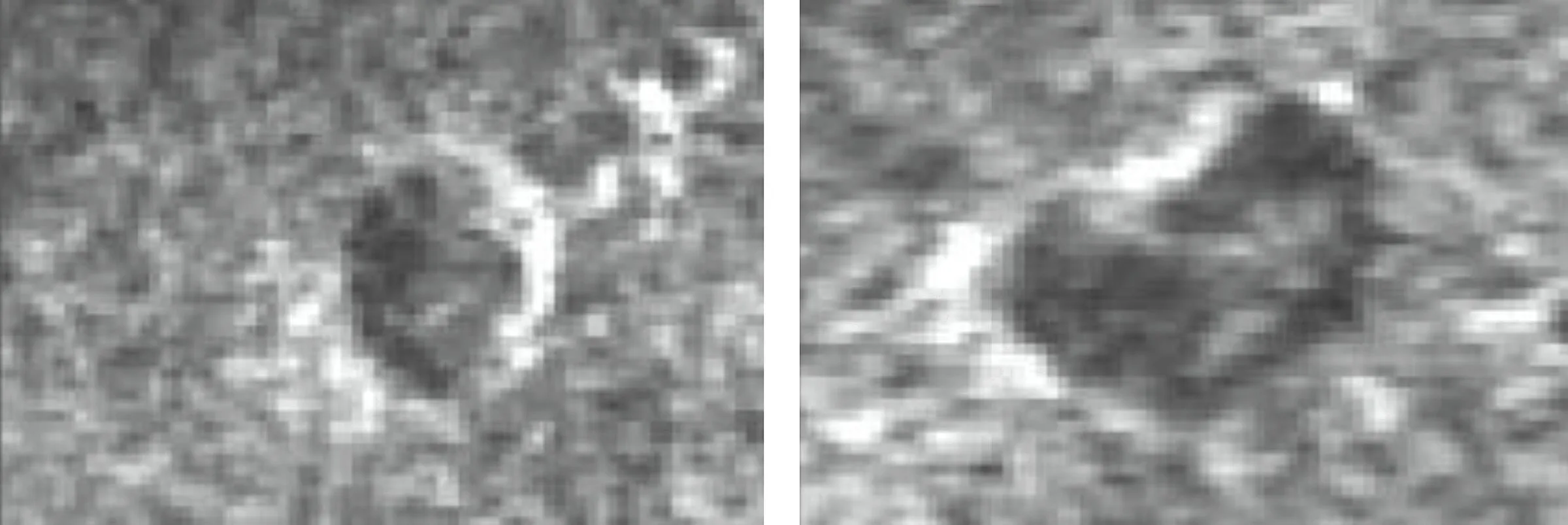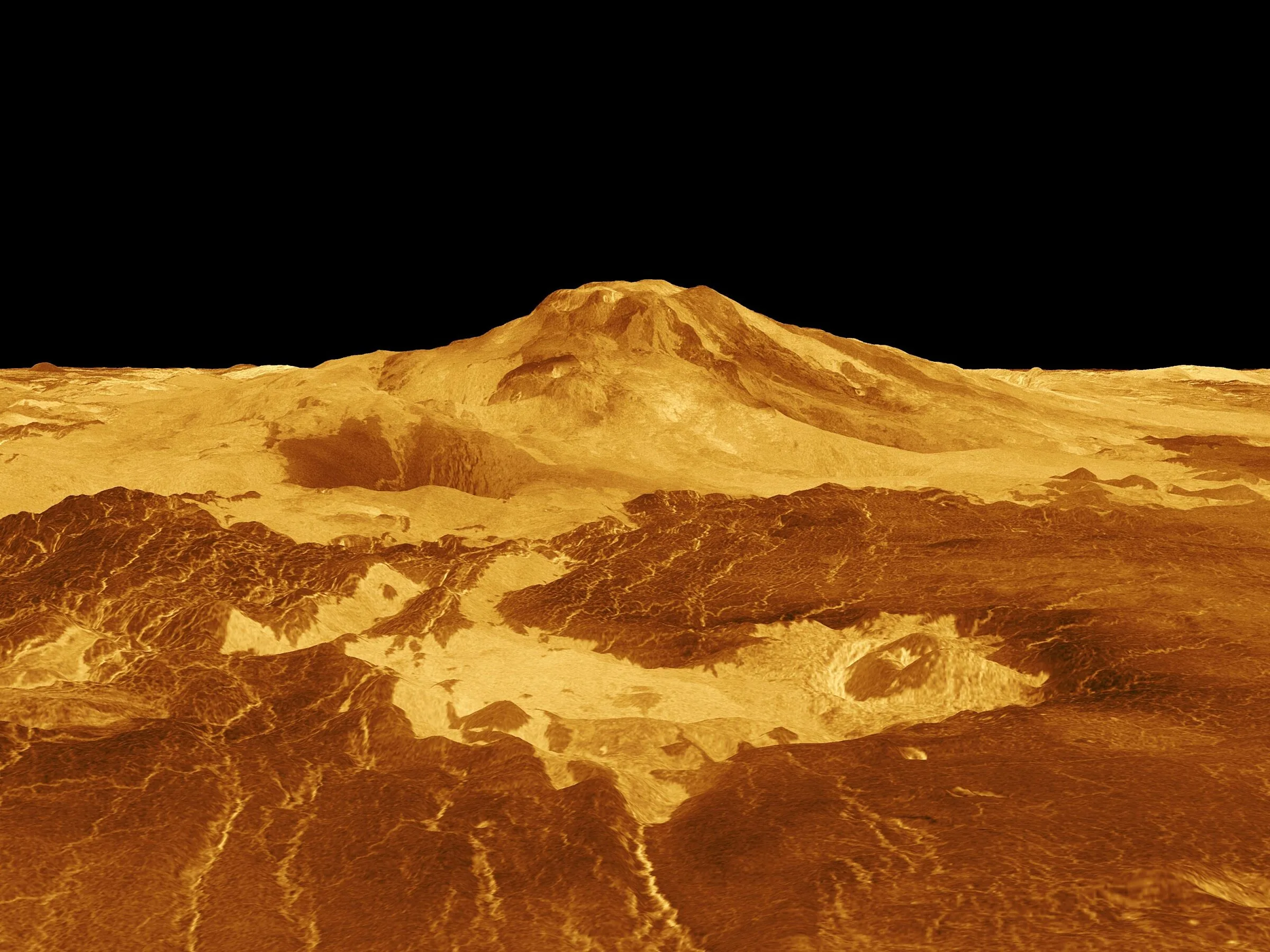Scientists have, for the first time, discovered possible signs of active volcanism on Venus.
The findings confirm long-held suspicions that the planet, which is 80% covered in volcanic rock and the scars of past volcanic eruptions, is still active today.
The evidence comes from data collected by NASA’s Magellan spacecraft, which orbited Venus from 1990 to 1994. In two grainy 1991 radar images captured eight months apart, a volcanic vent morphs from a circular depression into a larger, kidney-bean shape, which researchers interpret as indicating volcanic activity at work.
The discovery, which was published in the journal Science, provides an important data point for scientists trying to piece together why Venus, a twin to our own planet, morphed from a potentially habitable world into a stifling hellscape.
“There’s a lot of big-picture scenarios about how Venus has evolved over the last billion or two billion years,” said Robert Herrick, the paper’s lead author and a research professor at the University of Alaska Fairbanks Geophysical Institute. “An important boundary condition on those visions is how much activity is occurring today, what the nature of the geologic activity is that’s occurring today, and where it’s occurring today. This paper is sort of the first step in really nailing that down.”
Similar volcanic activity is likely to be detected by NASA’s upcoming VERITAS mission — a spiritual successor to Magellan that would map the entire planet in even greater detail and overlapping coverage.
Sue Smrekar, the VERITAS principal investigator who was not involved in the discovery, said the images of a volcanic event were “extremely convincing” that Venus is active.
“There’s all kinds of reasons to think that Venus should be active,” she said. “It is such a thrill to finally see proof, which also adds fuel to other lines of evidence for activity.”

A needle in a haystack
Herrick’s work with Venus data dates back to his time as a grad student and then postdoc, when NASA was distributing Magellan imagery on CD-ROMs.
Most desktop computers were not powerful enough to load large, high-resolution radar images, forcing researchers to explore the Venusian surface one small slice at a time.
Equipped with modern technology and a little extra time thanks to the pandemic, Herrick went looking for changes that happened between overlapping Magellan radar passes. He likened it to “looking for a needle in a haystack, with no guarantee that there’s a needle.”
To slim down the haystack, he focused on promising locations for volcanic activity. Unfortunately, much of Magellan’s overlapping radar coverage was at different viewing angles, making it much harder to look for changes.
The authors finally hit paydirt north of Maat Mons, the tallest volcano on Venus. There, a circular volcanic vent with an area of 2.2 square kilometers (0.8 square miles) in February 1991 morphed by October 1991 into a vent with an area of 4.0 square kilometers (1.5 square miles).
The paper offers two explanations for what happened during those eight months. The most likely scenario is that lava flowed into the vent, changing its size and shape. Another possibility is that the vent collapsed as lava drained away elsewhere. The authors identified possible lava flows north of the vent, but due to differences in the Magellan image angles, they couldn’t rule out that the flows were already present.

Future Venus exploration
The discovery that Venus is volcanically active comes amidst a continuing debate on whether phosphine, and thus possibly life, exists in the planet’s clouds. There is clearly more to explore on the planet next door.
Fortunately, four missions led by three different space agencies are headed to Venus soon: Shukrayaan, DAVINCI, VERITAS, and EnVision.
Like Magellan, VERITAS will pierce the planet’s clouds to create global radar maps. VERITAS’s maps will have a resolution of just 30 meters per pixel — a vast improvement on Magellan’s 100 to 300 meters per pixel. The spacecraft can also make topographical maps with a resolution of 250 meters in the horizontal direction, and just 5 meters in the vertical direction.
To track surface changes in extreme detail, VERITAS will use a tool called repeat-pass interferometry that compares phase differences between overlapping radar passes. This data-intensive technique can target specific areas to monitor centimeter-scale changes over hundreds of kilometers — a distinct advantage over Magellan.
“We’re planning on doing this in targeted areas, not just wherever we happen to get lucky,” said Smrekar.
Before it can study Venus, VERITAS has Earthly challenges to overcome. Last year, the mission was delayed three years to at least 2031 after a review of NASA’s Psyche mission found workforce challenges at the agency’s Jet Propulsion Laboratory. NASA’s latest budget proposal only offers a trickle of funding for VERITAS through 2028. Smrekar and other VERITAS team members are working to counteract the delay.
No one knows for sure what the next generation of Venus missions will find. Herrick noted that the new volcanic activity is comparable in scale to eruptions seen on Earth’s Hawaiian islands. Similar activity may be common across Venus, just waiting to be spotted by an orbiting spacecraft.
“We now know that these upcoming missions are going to find something,” Herrick said.
Source The Planetary Society
Our humans need coffee too! Your support is highly appreciated, thank you!


